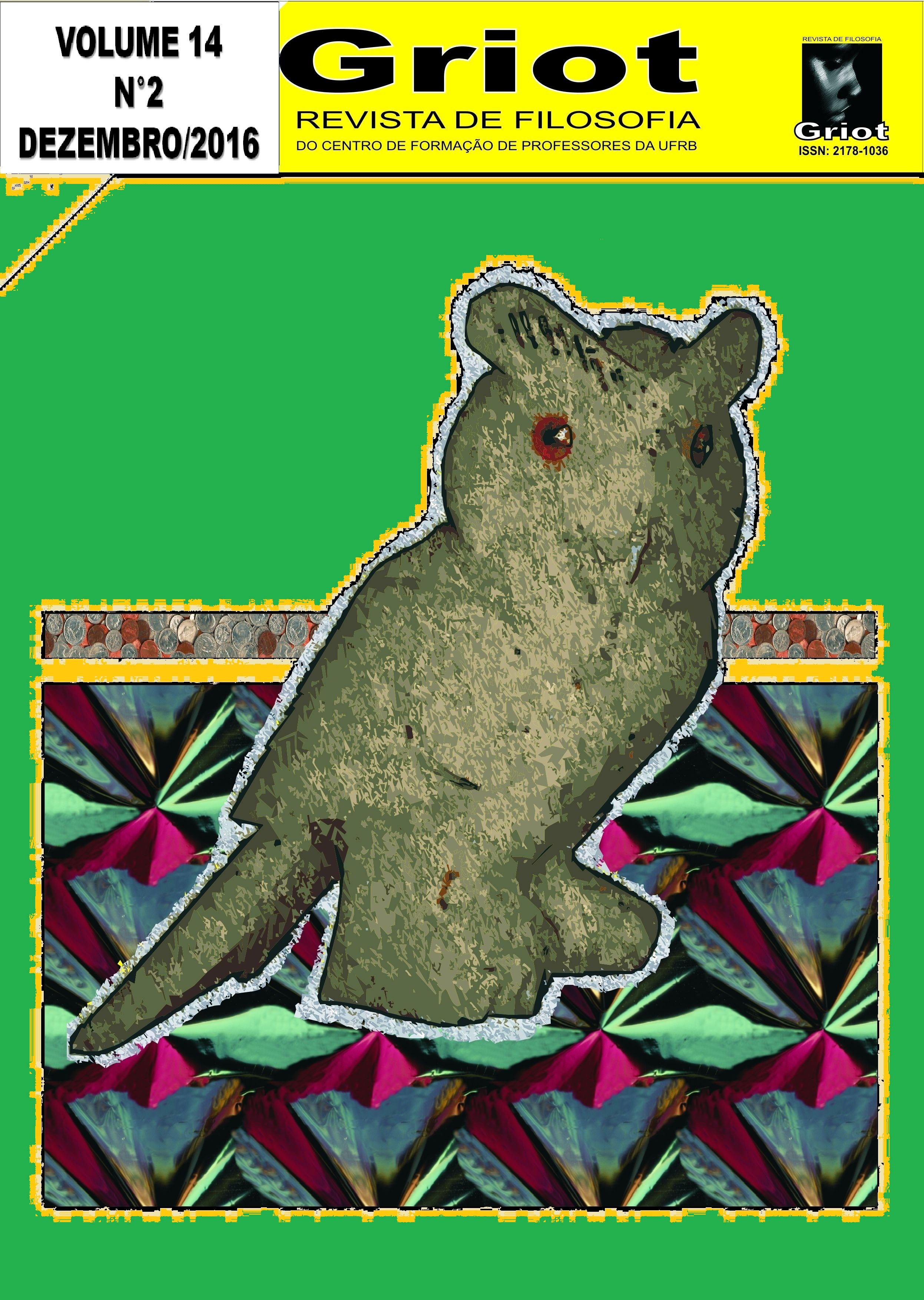The aesthetics of extremes: notes on the relationship between rock art and technical reproducibility in Theodor Adorno
DOI:
https://doi.org/10.31977/grirfi.v14i2.704Keywords:
Technical reproducibility; Rock art; Mythical immanenceAbstract
The article proposes a connection between two different fields of research, but with notorious elective affinities: the field of archeology and the philosophical aesthetics. It is intended to find, within the dialectic of Adorno, how articulate the concepts of prehistory and proto-history, it having as a guide the theme of rock art and its modern counterpart, the reproducibility technique. Such an approach takes as its starting point an intriguing paragraph of posthumous Adorno’s work, "Ästhetische Theorie," this subsection thus classified by Rolf Tiedmann as "Moderne Kunst und Industrielle Produktion" in which Adorno asserts that there is a convergence between the rock art and photographic camera, that occurred in objectification (Objektivation), e.g., in the action to separate the subjective act of the object that is seen . From this finding the greatest contribution of this paper was to identify a kind of mechanical reproduction proto-history in the prehistoric world. Thus, in a radically dialectical perspective it can be said that the virtual progress and technological sense in recent decades does not represent something qualitatively new in human history, being only an offshoot of a trend already contained in prehistory, which leads us to believe we have not yet overcome the state of mythical immanence widely denounced by Adorno and Horkheimer's "Dialectic of Enlightment. To demonstrate that this article aims to reconstruct the main thrust of the "Dialectic of Enlightenment", focusing on the myth category (Section 1). After it intends to present the relationship between prehistory and proto-history in the context of Adorno's thought, especially in the construction and essays of intermediate period of his thought, such as "Minima Moralia" and "Prismen" (Section 2). Finally, it wants to present some Adorno's reflections on rock art and mechanical reproduction present in Aesthetic Theory (Section 3).
Downloads
References
ADORNO, Theodor. Ästhetische Theorie. Frankfurt am Main: Suhrkamp, 1990.
ADORNO, Theodor. Minima moralia: reflexões a partir da vida danificada. 2° Ed. São Paulo: Editora Ática, 1993.
ADORNO, Theodor. Teoria Estética. Trad. Artur Morão. Lisboa: 70, 2013.
ADORNO, Theodor. Dialética Negativa. Rio de Janeiro: Zahar, 2009.
ADORNO, Theodor. Escritos filosóficos tempranos. Ediciones Akal: Madrid, 2010.
ADORNO, Theodor. Filosofia da nova música. São Paulo: Perspectiva, 2011.
ADORNO, Theodor. Prismas. Trad. Augustin Wernet e Jorge Mattos Brito de Almeida. São Paulo: Editora Ática, 2001.
ADORNO, Theodor; BENJAMIN, Walter. Correspondência 1928-1940. Trad. José Marcos Mariani de Macedo. São Paulo: Editora Unesp, 2012.
ADORNO, Theodor; HORKHEIMER, Max. Dialectic of Enlightenment: Philosophical Fragments. Stanford University Press: California, 2012.
ADORNO, Theodor; HORKHEIMER, Max. Dialéctica de la Ilustración: Fragmentos filosóficos. Editorial Trotta: Madrid, 1998.
ADORNO, Theodor; HORKHEIMER, Max. Dialética do esclarecimento: fragmentos filosóficos. Rio de Janeiro: Jorge Zahar Editor, 1985. Reimpressão de 2006.
BENJAMIN, Walter. A obra de arte na era de sua reprodutibilidade técnica. In:
BENJAMIN, Walter. Magia, técnica, arte e política. São Paulo: Brasiliense, 2012.
BENJAMIN, Walter. O anjo da história. Belo Horizonte: Autêntica Editora, 2012.
BUCK-MORSS, Susan. Origen de la dialéctica negativa: Theodor W. Adorno, Walter Benjamin y el instituto de pesquisa de Frankfurt. Madri: Siglo Veintiuno Editora, 1981.
CROCE, Benedetto. The essence of aesthetic. Charleston, Nabu Press, 2010.
DUARTE, Rodrigo. Notas sobre modernidade e sujeito na Dialética do Esclarecimento. In: DUARTE, Rodrigo. Adornos: nove ensaios sobre o filósofo frankfurtiano. Belo Horizonte: Editora UFMG, 1997, pp. 45-63.
HABERMAS, Jürgen. O Discurso filosófico da modernidade. São Paulo: Martins Fontes, 2000.
JAMESON, Fredric. Marxismo tardio: Adorno ou a persistência da dialética. Trad. Luiz Paulo Rouanet. São Paulo: Editora Unesp, 1997.
RAMOS, Luciano. História do Brasil. São Paulo: Ed. do Brasil, 1977.
SCHAAFSMA, Polly. Images and Power: Rock Art and Ethics. New York: Springer, 2013.
TERZI, Marinella. Prehistoric Rock Art. Chicago: Child Press, [S.I].
WIGGERSHAUS, Rolf. A Escola de Frankfurt. História, desenvolvimento teórico, significação política. Rio de Janeiro: DIFEL, 2002.
WILDGEN, Wolfgang (2004). The Paleolithic Origins of Art, its Dynamic and Topological Aspects, and the Transition to Writing. In : Bax, Marcel, Barend van Heusden et Wolfgang Wildgen (éds.), 2004. Semiotic Evolution and the Dynamics of Culture, series: European Semiotics / Sémiotique Européenne, vol. 5. Bern : Lang : 117-153.
Downloads
Published
How to Cite
Issue
Section
License
The authors who publish in Griot: Revista de Filosofia maintain the copyright and grant the magazine the right of first publication, with the work simultaneously licensed under the Creative Commons Attribution 4.0 International License, allowing sharing and adaptation, even for commercial purposes, with due recognition of authorship and initial publication in this journal. Read more...









































































